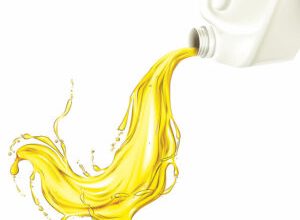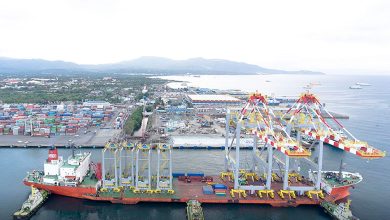‘It’s a transition, not a switch’

Interview by Kap Maceda Aguila
AFTER THE LOCAL launch of the latest iteration of Shell’s “best-ever performance fuel,” Velocity talked exclusively to Shell Global Solutions Fuels Scientist Andreas Schaefer and Pilipinas Shell Head of Mobility Marketing Arvin Obmerga. Here are the excerpts of our interview.
VELOCITY: What does the new Shell V-Power fuel mean for consumers? Will its properties help them save on fuel consumption — and by how much? What’s the figure like?
ANDREAS SHAEFER: Good question. I mean, because it helps you to clarify once again, what we refer to when we speak about engine performance improvement or rejuvenation of engine performance. In principle that refers to aspects like fuel consumption that you were just mentioning. Through cleanliness, you can improve fuel consumption efficiency as part of performance, but that also refers to that same power and acceleration, which obviously is improved in any cleaner engine — compared to a dirty engine.
In particular, to your question, we don’t quantify the fuel economy benefit at this point in time because I’m convinced that are too many types of cars that you can find in the marketplace that respond differently to our formulation. We could provide a kind of average benefit or the like but we have decided that we do not want to mislead customers, and we want to communicate honestly. So we don’t quantify.
But across various engine types and V-Power variants, will there be fuel savings?
MR. SHAEFER: Absolutely. We conducted different types of tests but we used the industry standard, and this relies on bench engines, because you can control bench engines better than full vehicles. The other positive thing about bench industry standard testing is that there is no doubt about this. It’s widely accepted in the industry. This is not just a test that we have made up in order to show the benefits that we want to communicate. On top of that, we have also conducted fleet tests with engines that we have sourced from the open market… to have that realistic test environment. We tested these vehicles under controlled conditions, for example, in terms of fuel consumption. We then operated these vehicles with Shell V-Power and observed statistically significant fuel economy benefits for the cars that we tested. We are very much convinced that the benefits that we are communicating are real.
We also source cars in a way to make sure that the car fleet that we are testing represents different engine technologies and also different brands that you can find in the marketplace to make sure that the results are really representative or as representative as they can be for target markets like the Philippines. But there are lots of vehicle brands out there. We just cannot test everything so it’s just technically impossible. What we’re doing is we investigate the market and try to understand how the car market looks like, using the brands that are most represented in the market, test those which gives us confidence that our results are really sensitive and meaningful for the customer.
How long will it take until a vehicle gets to the 100% clean state? Is it after a tank of V-Power? If I’m going to switch to the fuel, when can I expect my car at that 100% level and have that optimized performance?
MR. SHAEFER: It is a very quick effect; most of the effects can be perceived with the first tankful. There’s a huge amount of benefits that can be experienced in a relatively short timeframe. If you continue to fill up with Shell V-Power you see further benefits but customers can benefit really pretty quickly within the first tankful of the product.
ARVIN OBMERGA: We’ve made it clear in terms of the two main benefits of the product. The first one is 100% cleaning of vital engine parts which means you’ll feel it once you fill up with V-Power. But eventually, through consistent use, depending on how you use your vehicle and how much you fill in, you get the 100% restoration of engine performance.
MR. SHAEFER: And maintain it if you keep using it.
MR. OBMERGA: So if you use it consistently, you’ll to be able to get 100% performance in engine performance restoration.
Is the cleaning efficiency the same across V-Power fuel product types?
MR. SHAEFER: Yes, indeed it is. So, the amount of cleaning molecules that you can find is the same. The key benefit from Shell V-Power Racing is that it has an enhanced octane number that further supports the power and performance characteristics of the fuel, of course. But the cleaning level is the same.
Many are looking forward to a future that’s electrified, and I know that a lot of companies are also working toward formulating sustainable fuels. As a fuel scientist, can you speak about that or where Shell is at and what you and your colleagues are doing to help us realize these sustainable fuels which of course are better than fossil fuels? What’s the kind of work behind the scenes that you guys are looking at are doing?
MR. SHAEFER: Yeah, you’re absolutely right. For Shell, the development of sustainable mobility solutions is of key importance and we are working in that area using different types of approaches. We are, for example, looking into making existing conventional fuels based on hydrocarbons greener so like, by for example, bringing in biofuels. On top of that (are fuels) with increased efficiencies which lower fuel consumption also contribute to lowering CO2 emissions. Shell as a whole also works on electrification. We have a very, very strong footprint in that area and what we can offer our customers in the e-mobility area, but we’re also working on other types of let’s say, other types of fuels like LNG (liquefied natural gas) offerings.
We are also working on longer-term solutions like, for example, hydrogen, which is for us, interesting important area that we are looking at. We are also looking into making conventional fuels more sustainable — I mentioned biofuels — there are other components that we are also looking at on the scientific side in order to make sure that our fuels are as sustainable as they can be. So we are working at Shell on multiple fronts to make the mobility solutions more sustainable.
MR. OBMERGA: For the Philippines, compared to other countries, we’re a little bit nascent on electrification — compared to even our Southeast Asian neighbors. So we’re taking a demand-based approach, and currently the demand for electrification is really in its early stages. That’s why we continue to strengthen our proposition on our conventional fuels, and as Andreas has mentioned, for the Philippines it’s biofuels — although I must say it’s government-regulated or driven in terms of the mix.
I think that Shell has the technology in terms of biofuels for us to be able to meet the standards that the government will tell the industry. We navigate that space but, at the same time in parallel, we also navigate the energy transition. As we mentioned, it’s a transition, not a switch. So, it will take time for us to be able to go through electrification or other product solutions that Andreas mentioned such as hydrogen and LNG. I think that’s the space we play in here in the Philippines.
So obviously, it’s limited by local conditions, right? But just to clarify, Shell is ready to supply more sustainable, eco-friendly fuels once the local context where you guys operate, allow for that? It’s just a matter of time.
MR. SHAEFER: We have a lot of experience in the space. I mean, there are markets here in Asia-Pacific where you see much higher biofuel levels than in the Philippines. In Europe, for example, if you look into diesel fuels, we typically have biofuel content of seven percent, in the Philippines it’s two percent. It’s a very complex topic, but I would say that we’re ready. We have a lot of technology at hand that we can bring into the marketplace if the markets permit this.




